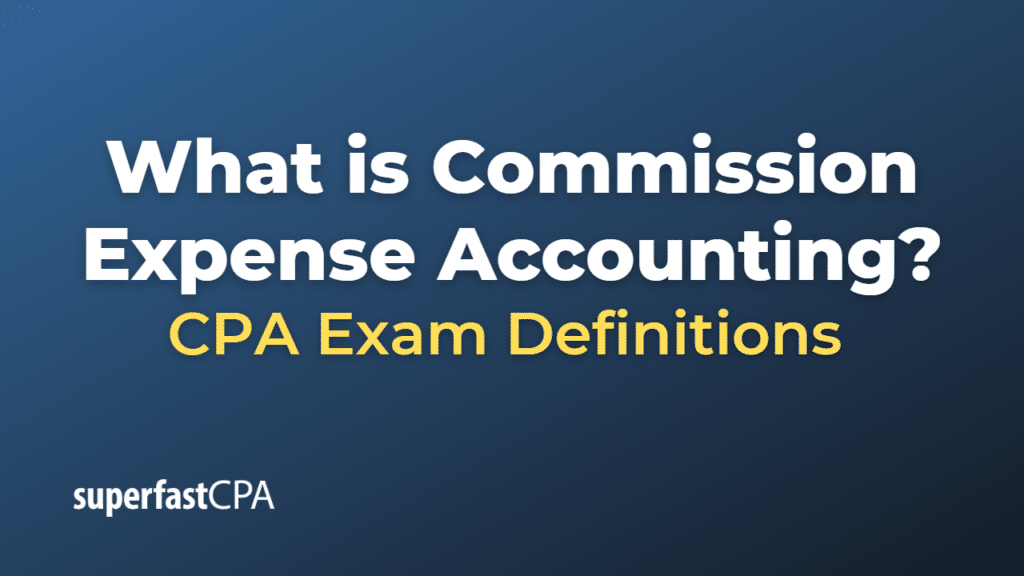Commission Expense Accounting
Commission expense accounting refers to the process of recording and reporting commission expenses incurred by a business when compensating its salespeople, brokers, or agents for their services in facilitating transactions or generating revenue. In financial accounting, commission expenses are typically treated as operating expenses and are recorded on the income statement.
When a business pays a commission to its salesperson, broker, or agent, it needs to record the expense in its accounting records. Here’s how commission expense accounting generally works:
- As sales are made or transactions are facilitated, the business calculates the commission owed to its salesperson, broker, or agent based on a predetermined commission rate or structure.
- The commission expense is recorded in the company’s general ledger, usually under an account named “Commission Expense” or a similar designation.
- When the commission is paid to the salesperson, broker, or agent, the business records a decrease in its cash or bank account, and the commission expense account is credited.
- At the end of the accounting period, commission expenses are reported on the income statement under the “Selling, General and Administrative Expenses” (SG&A) section. This reduces the company’s net income for the period.
- If commissions are accrued but not yet paid, the business will record a liability called “Commissions Payable” on its balance sheet. When the commissions are eventually paid, the liability is reduced, and the cash account is debited.
Commission expense accounting is essential for businesses that use commission-based compensation models, as it helps them track and manage their commission expenses, assess sales performance, and ensure accurate financial reporting. Proper commission expense accounting also helps businesses comply with tax and regulatory requirements and provides valuable information for decision-making by management, investors, and other stakeholders.
Example of Commission Expense Accounting
Let’s consider a hypothetical example to illustrate the concept of commission expense accounting in a car dealership.
Imagine AutoHub, a car dealership, pays its salespeople a commission of 5% of the total value of each car they sell. In a given month, one of its salespeople, Tom, sells three cars with a total value of $90,000.
Here’s how AutoHub would account for the commission expense related to Tom’s sales:
- Calculate the commission owed: AutoHub calculates the commission owed to Tom based on the total value of the cars he sold and the commission rate.
Commission = Total Sales Value × Commission Rate
Commission = $90,000 × 5%
Commission = $4,500
Tom is owed a commission of $4,500 for his sales in that month.
- Record the commission expense: AutoHub records the commission expense in its general ledger under an account called “Commission Expense.
Debit: Commission Expense – $4,500
Credit: Commissions Payable – $4,500
- Pay the commission: When AutoHub pays the commission to Tom, it records the payment in its accounting records, reducing its cash account and the Commissions Payable liability.
Debit: Commissions Payable – $4,500
Credit: Cash – $4,500
- Report the commission expense: At the end of the accounting period, AutoHub reports the commission expenses on its income statement under the “Selling, General and Administrative Expenses” (SG&A) section. This reduces the company’s net income for the period.
This example demonstrates how commission expense accounting helps businesses accurately track and manage commission expenses, assess sales performance, and ensure proper financial reporting.













